Shell Money Festival in the Solomon Islands
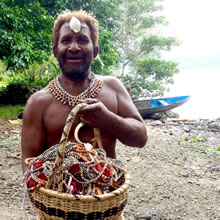
The people of Malaita Island have long been the most feared tribe in the Solomon Islands. Distrusting of strangers for generations, new arrivals to the island have not been encouraged to settle here so they’ve built their own artificial islands just off the coast.
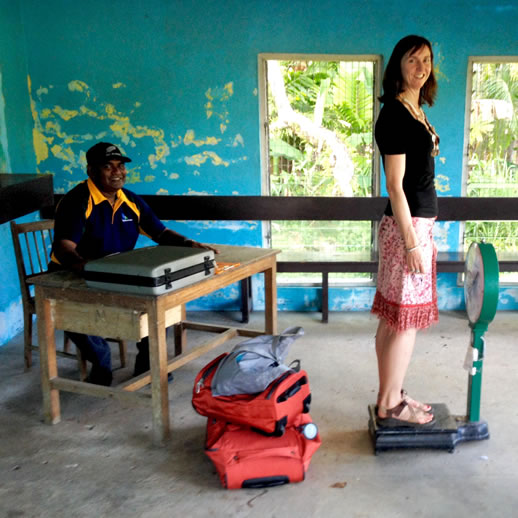
Auki airport – checking in!
The insular tradition lingers on in Malaita’s capital Auki; we have barely set foot out of the Rarasu Motel when a passerby calls out a not so cheery FU greeting to us.
Auki doesn’t have much to offer tourists and is the kind of place you want to pass through quickly on the way to somewhere else. Fortunately there are some beautiful offshore islands nearby.
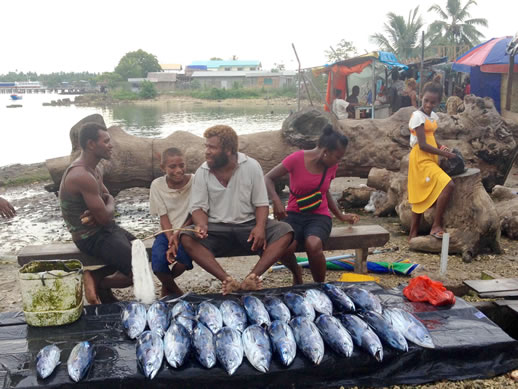
Fresh fish for sale at Auki market
However, the islanders of Basu, a short boat ride from Auki, welcome visitors. So much so that in 2014 they introduced a Shell Money and Artifcial Islands Festival to build their community and share their culture and customs with others.
It’s one thing to read about the effect global warming will have on the inhabitants of low-lying islands like these in the Solomon Islands, but another to see their homes.
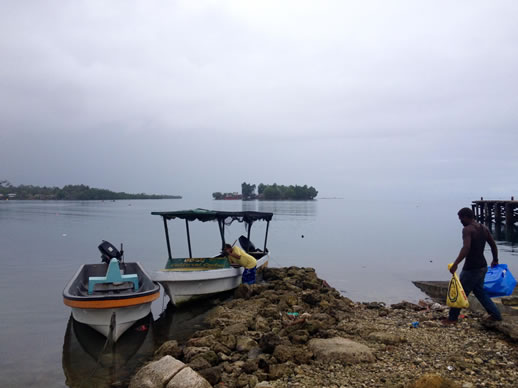
Loading the boat in Auki before going to Basu Island with Auki Island artificial island in the background
Busu Island was built on a sandbar 500-600 years ago. Today it’s a welcoming village scene with large, shady mature trees and home to 150 residents of all generations.
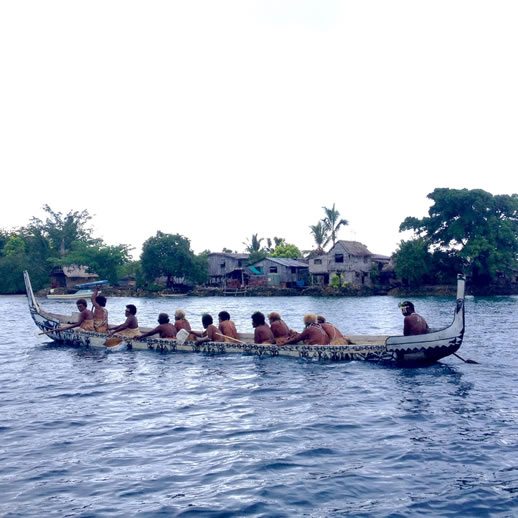
Busu Islanders welcoming visitors to the shell money festival
Busu Island is protected by a reef and has survived storms, cyclones and worse. Other nearby islands were decimated by a tsunami several years ago and, still not welcomed on the mainland of Malaita, the residents built new artificial islands and resettled their village.
Now just a few stones remain of the old island, barely peeping over sea level. In response to homelessness the families did what they had been doing for generations; they painstakingly built their own new coral island rock by rock.
Building an artificial island is hard work which involves moving chunks of reef coral one by one into a pile. Nowadays, the rocks are held in place with metal casings.
Some artificial islands are tiny, with just enough room for two huts the size of your garden shed. Others are big enough to fit several houses and provide shelter for an extended family or village.
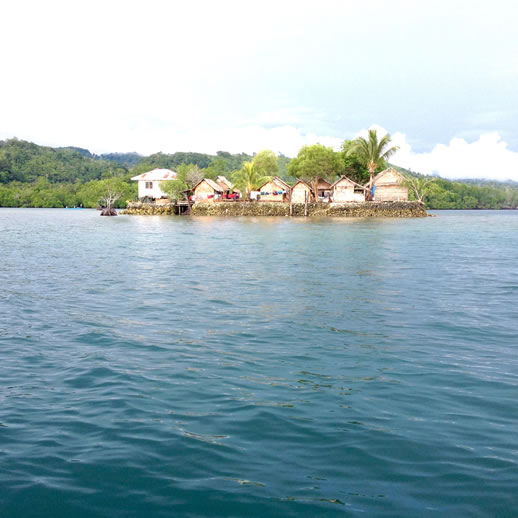
All of these artificial islands sit barely a meter above sea-level, their inhabitants some of the most vulnerable people on our planet. Yet this is their only home. They are in a sense refugees, cast out into the ever-moving sea without a safety net, just a fishing line to dangle over the edge of their dugout canoe.
Still life is culturally rich on these artificial islands. Women wash clothes, weave mats from tree leaves and cook over the fire and under hot rocks, just as they have for centuries.
Men fish, take jobs fishing for others and build huts. The thatched roofing only lasts eight months so rebuilding is a constant job. When things are tight the men may catch turtles for sale to the Chinese.
Children paddle to school on the mainland, play with tiny panpipes made from bamboo and chase each other through the dust.
Everyone chews beetel nuts. A local product that gives you a mild buzz if chewed for hours but unfortunately dyes your mouth, gums and teeth red and creates the need to regularly spit a torrent of red wastage, staining the ground and turning puddles blood red.
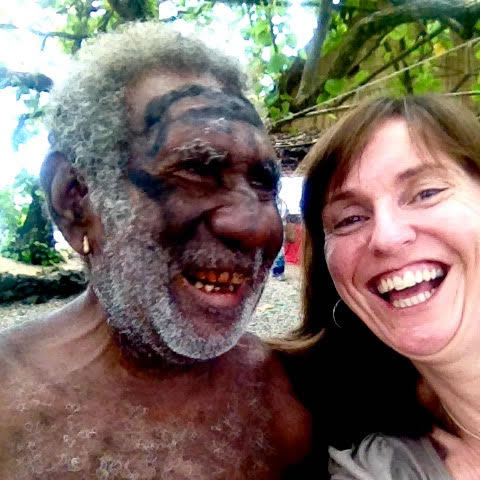
Even the children chew beetel nuts making addiction and tooth decay more commonplace than early education here. At first glance life on a tiny coral island appears idyllic. The reality less so.
But today is a celebration day. The whole of Busu island is out in force, along with representatives from other artificial islands around the Langalanga Lagoon.
There are visitors too; 14 expats from the capital Honiara, three travel writers (including me) from assorted locations and several local big wigs including the Premier of Malaita.
The festival starts with a welcome from elderly ladies in a splendid dugout canoe, their urgent song carrying across the placid lagoon.
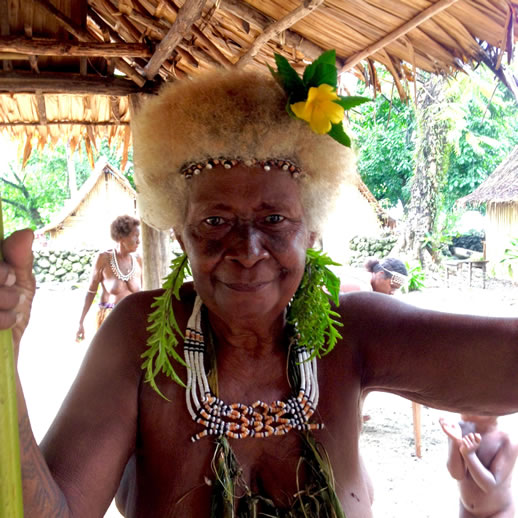
Once we’re safely on dry land the men put on a welcome dance which involves spear thrusting, shield brandishing and heavy grunting. The expat ladies squeal and the locals laugh.
The opening ceremony includes speeches galore, then a solemn raising of the Solomon Islands and British flags for this is a sovereign state.
As the festival proceeds music, singing and dancing are enthusiastically delivered, but it’s the people themselves who captivate me most.
Dressed in traditional grass skirts for the ladies, or bark loin clothes for the men, the villagers are adorned with leaves, flowers and dangling greenery as well as shell jewellery galore.
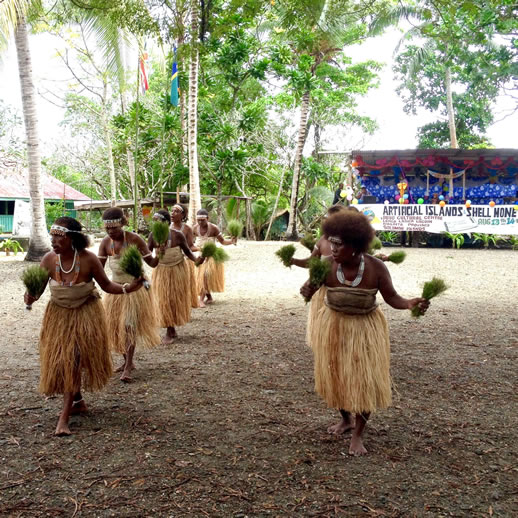
Some wear black face paint, others have painted white geometrical patterns on their faces, arms or back.
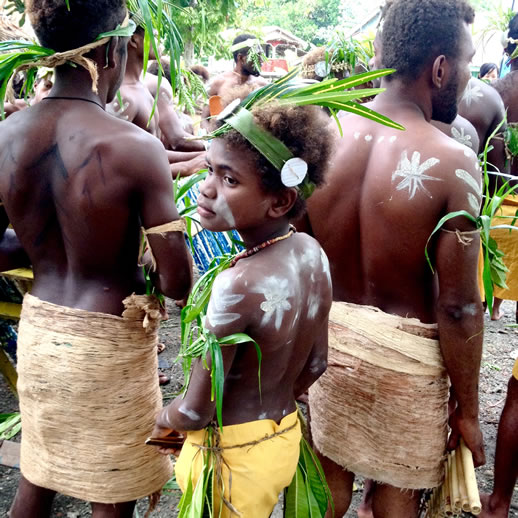
The musicians play bamboo panpipes and an air xylophone. The men enthusastially beat plastic tubes of the air xylophone with old rubber soles. It’s an ingenious way to make music and a unique sound.
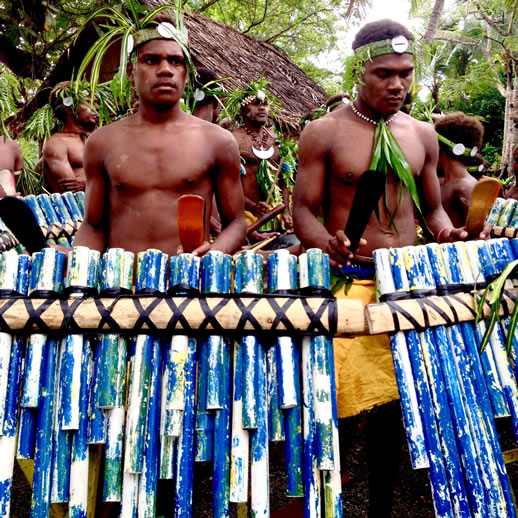
Meanwhile the children join in and dance too, although they need do little more than stand around shyly looking on to capture our hearts.
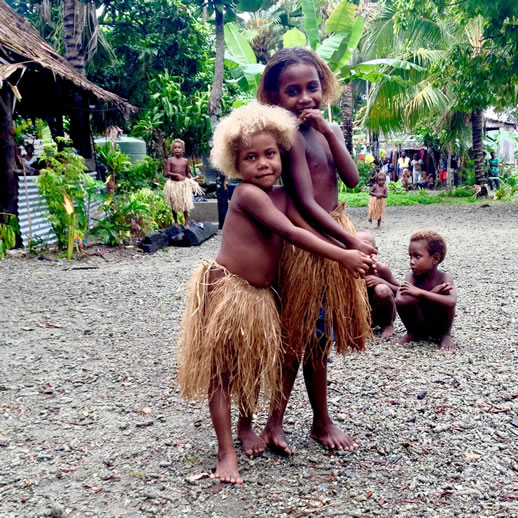
Lunch is traditional fare of locally caught or grown fish, sweet potato and greens followed by fresh fruit, served on the deck over the water.
Six years ago coral was planted around the overwater deck and exotic fish, giant clams and an octopus can be clearly seen beneath the clear water. It looks inviting but alas we have no snorkell or mask to see the fish up close.
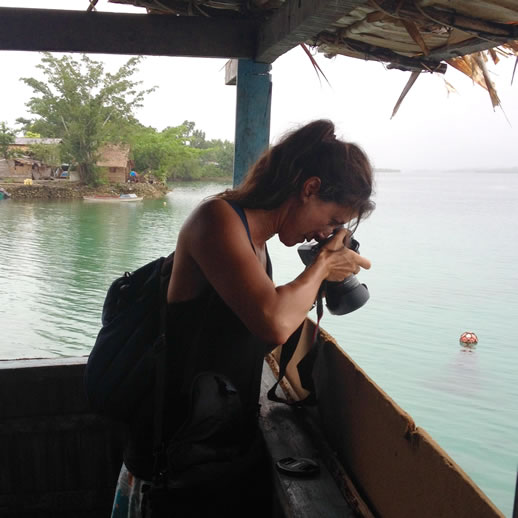
In the afternoon we learn how shell money is created and watch a mock wedding ceremony. We learn how the bride price is paid in shell money and handed over before the shell-adorned bride joins her handsome groom.
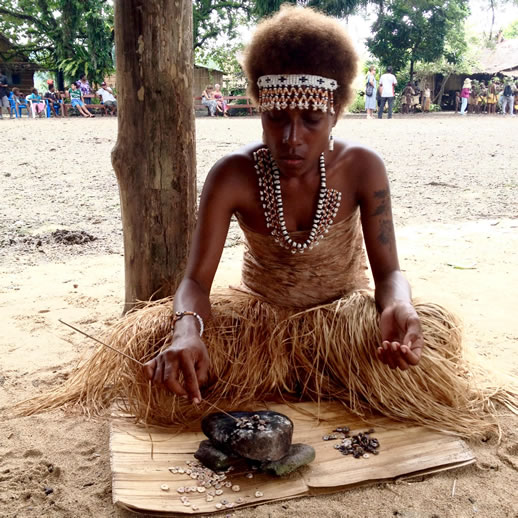
This has been a unique opportunity to experience life on an artificial island and learn about the traditions and culture of the people in this far flung corner of our world.
The islands themselves may not survive the effects of global warming but, no matter what happens, the people of these artificial islands will still hold into their traditions. It has been an honor to share that with them because no matter what change comes the old ways hold timeless appeal.
We can only hope that the water doesn’t rise with climate change and that the Busu Islanders will never need to build themselves a new island home.
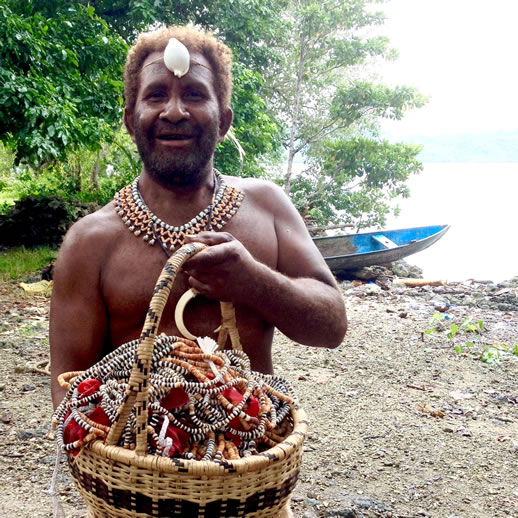
I was a guest of the Solomon Islands Visitors Bureau during my visit. See their website for photos, travel information or to plan your trip including a visit to the Shell Money and Artificial Islands festival which takes place in August every year. Simple homestay accommodaton is available for guests on Busu Island.
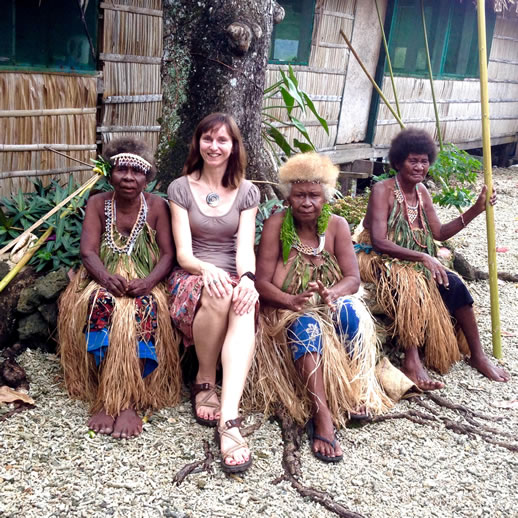
Want to find out more about the Solomon Islands?
Stay tuned for more travel stories, ideas and inspiration. Get free email updates from Get In the Hot Spot – a weekly injection of tips to help you be more adventurous and have more fun. Sounds good? Click here now for free updates.
Share This Story, Choose Your Platform!
6 Comments
Leave A Comment
You must be logged in to post a comment.


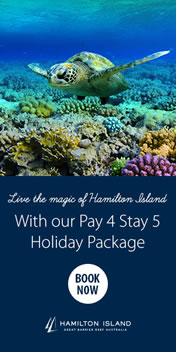






How interesting Annabel, what an insight… and how worrying as we expect sea levels to rise more. terrible. How cool is the idea of paddling to school. I’d rather paddle my kids than drive them. Many thanks for whisking me off the the Solomons this arvo.
Hi Seana,
I agree. Re paddling kids to school – Me too! And no traffic jams :)
x A
I love this peek into a way of life that is so different from anything I’ve seen or experienced.
Hi Marcy,
It is amazing.
Great story Annabel – this is worrying though; “When things are tight the men may catch turtles for sale to the Chinese.” Do you think this still happens? I understand it’s now illegal now – and I’d like to think it was enforced. I saw some horrific (old) brochures while I was there last month, handed out by Fisheries back in the 90s – explaining to villagers that they could sell turtles for big money – with diagrams showing them how to dynamite fish. I’ve been to several remote parts of the country now and haven’t heard of turtles being caught. And we did see a few around the Russells and Floridas! Love turtles.
Hi Deborah,
It is worrying but that’s what I was told. I think it is illegal but I guess the education process will take a while – and poverty and desperation do drive people to desperate measures. The buyers should know better.
Hopefully the practice is diminishing and the turtles will live long and prosper.